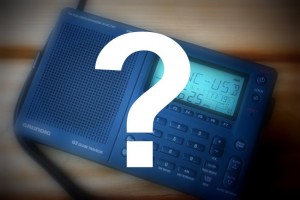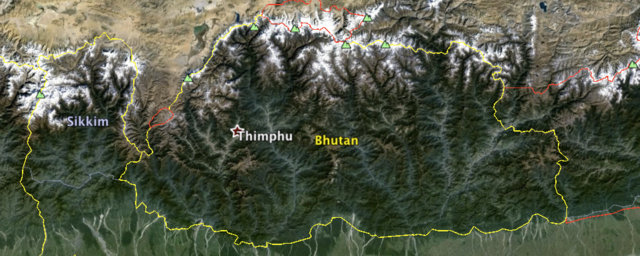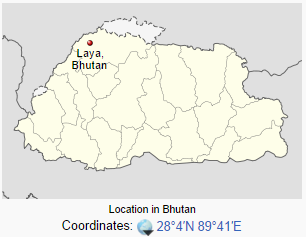 Shortwave listeners are interesting, creative people who do interesting, creative work: they’re scientists, veterans, corporate employees, students, retirees, volunteers, politicians, musicians, inventors, entrepreneurs, engineers, humanitarians, reporters, artists, researchers, sailors, pilots, pirates…and most seem to be travelers. But to say the least, they’re very diverse. The joy of the SWLing Post, for me, is the fascinating readers here and the great variety of questions and comments I receive from you.
Shortwave listeners are interesting, creative people who do interesting, creative work: they’re scientists, veterans, corporate employees, students, retirees, volunteers, politicians, musicians, inventors, entrepreneurs, engineers, humanitarians, reporters, artists, researchers, sailors, pilots, pirates…and most seem to be travelers. But to say the least, they’re very diverse. The joy of the SWLing Post, for me, is the fascinating readers here and the great variety of questions and comments I receive from you.
On this blog, I often write about selecting the “right” radio for home, boating, preparedness, off-grid living, and of course travel–but sometimes I like to go through the mental exercise of imagining a scenario a little more extreme.
Indeed, I occasionally receive such “extreme” questions from our readers, questions that push the limits of the hobby, demanding highly specific needs in a radio. And, I readily admit, I thoroughly enjoy these questions! They give me a chance–and good excuse, really–to be imaginative and innovative, to push beyond mere practical or monetary constraints to consider unique environments, weather conditions, durability needs, power requirements, and/or resource availability…great fun.
If you enjoy this kind of brain game, too, check out our virtual challenge that follows:
Should you agree to take it on, you’ll need to complete it within two weeks. Why the time constraint? Let’s imagine that your flight leaves May 15th, and you’ll need to make sure you’ve received, tested, and packed all of your supplies by that date.
[By the way, this scenario is based on an actual reader question.]
Here’s your challenge…
Accommodation: A one room house
Electricity: Your village is completely off the electrical grid
Internet: You have no access to the Internet in the small town where you will be living. As a teacher you can use the Internet at any school in Bhutan, though you’ve been told there is no internet access in remote Laya.
Your budget: $1,200 US–which must cover all of your radio requirements (radio, antenna, batteries, and all accessories)
 Scenario: You’re serving a two year assignment as an English and Science school teacher in the extremely remote community of Laya, Bhutan. Your logistics, travel and living expenses will all be covered for you by the agency which arranges the teacher assignment. That being said, your total amount of luggage cannot exceed the maximum amount of luggage allowed by your airline: one carry-on and two check-in bags, both of no more than 60 kg (132 lbs), total. There will be some winter weather clothing made for you locally in Laya. You’ve been told that Laya is “several days” walk from the nearest maintained road.
Scenario: You’re serving a two year assignment as an English and Science school teacher in the extremely remote community of Laya, Bhutan. Your logistics, travel and living expenses will all be covered for you by the agency which arranges the teacher assignment. That being said, your total amount of luggage cannot exceed the maximum amount of luggage allowed by your airline: one carry-on and two check-in bags, both of no more than 60 kg (132 lbs), total. There will be some winter weather clothing made for you locally in Laya. You’ve been told that Laya is “several days” walk from the nearest maintained road.
Once you arrive, you will primarily travel regionally within Bhutan on an infrequent basis.
Bhutan is a beautiful land-locked, mountainous country, nestled in the Himalayas. You will work and live in the town of Laya, Bhutan (population 3,000) as an English and Science teacher. Laya’s altitude is 3,820 meters or 12,533 feet.
Once you’ve settled in, ordering a new radio or accessories will not be an option. Repairing your radio will also be very difficult as you expect no access to electronic repair facilities. An emphasis on quality equipment is a must. You might be wise to consider a small, back-up radio as well.
You’ve allowed yourself a rather generous budget since this is such a long-term assignment. You’ve allocated $1,200 US –the price of a good laptop computer. You do not plan to bring a laptop, but you do plan to bring a lightweight tablet PC or smart phone for use when you travel regionally, in hopes that you will find internet access in other towns. Your main limitations will be:
- Being completely off the grid
- Weight and size of equipment
- Allowance for alternative power supplies (how will you charge your batteries at home?)
Your small, one room stone cottage is attached to another similar cottage. You will be able to string a wire antenna outside, and you understand that there is even “a small tree” outside the window. Weather, at this altitude, can be extreme at times.
We’ll assume you’re starting from scratch, that you have neither radio nor accessories.
Your goal is to have the best shortwave listening set-up possible for your budget and for this location.
If you are a ham radio operator (or plan to become one), you may chose a general coverage transceiver for this assignment. There is, however, no guarantee that you will be able to successfully procure a Bhutanese license, but there is some promise. (I can assure you that if you do get on the air, you’ll need to be familiar with operating split and working pile-ups!)
Obviously, the more you understand the unique geography and infrastructure of Bhutan and its limitations, the better choices you’ll make for your gear.
Limitations:
- You’re limited to a (virtual) budget of $1,200 US to procure your supplies; ideally, this includes shipping costs of the purchase
- You can select used gear, but must base your choices on reality (i.e., actually find item(s) online and document the price and time of availability). If you “shop” eBay, make sure you’re using the final price, not the current or opening bid. If you do locate something used on eBay, QTH.com, QRZ.com or at Universal Radio, for example, include the link! (Just to add to the fun.)
- Your main objective is to listen to international broadcasters, and do a little DXing.
- Remember, you’ll be stuck with this radio for two full years! So choose something you’ll love to operate, and don’t forget your vital accessories.
Note that the limitations of this exercise are simply to level the playing field for everyone as well as to make the challenge a little tougher (and thus more fun!). Of course, they’re open to interpretation, but do try to honor the spirit of the game.
If you participated in our last challenge, it will be interesting to see if this one will have you opting for different equipment.
Up to the challenge? You’ve got two weeks–!
 To participate, just comment on this post with your suggested set-up, any links, and a brief explanation for your choices.
To participate, just comment on this post with your suggested set-up, any links, and a brief explanation for your choices.
You’re also welcome to email me directly with your response.
We’ll select some of the most interesting and relevant responses and post them in two weeks, on October 3, 2014.
Have fun! We can’t wait to read the responses…!





1) Asus EEE-PC $100 from ebay.com
2) Soft66RTL-HF-VHF-SDR-including-RTL2832u-R820T-with-upconverter ($52 ebay)
3) 23000mAh Portable External Battery Solar Power Charger for LAPTOP 12V 16V 19V ($109 ebay)
it has multiple pin configuration and also a LED torch.
4) Single core Electrical wire 100 feet for antenna (INR 300 = 5 $ in india)
5) Nylon thread/Rope (INR 50 = 0.9 $ in india)
6) 30 feet Coaxial cable (RG56 ???) INR 80 = 1.3 $
a) Install Linux(Fedora), GNU Radio, and other software for RTL sdr.
b) additionally install fldigi, multimode, HFfax software, NOAA weather decoder
c) make a QFH( Quadri Fillar Helix Antenna) for 137MHz NOAA satellite reception also usefull for VHF 2m reception, upon arrival at the destination. The wooden stick and batten used for it can be available free at the Destination.
total expences = 100+52+109+5+1.3 = 267.3 $
Still one have 1200 – 267.3 = 932.7 $
Hi! This is a great challenge. I would take my Tecsun PL 660 and buy a solar AA charger. (And maybe $400 worth of AA duracells! 🙂 ) And for my backup……My Grundig FR200!
What? No gazillion dollar receiver with a four mile wire strung up?
Correct! It’s a fun challenge in a great location. I want to use the radio I use now to see what I can pick up. It’s a good location to pick up stations from the otherside of the world that I normally can’t get, but dream about what it would be like. The PL 660 isn’t a slouch when it comes to receiving, and it has SSB and the Airband! This is a fun challenge and it’s a great time to enjoy listening to the shows, not just seeing what I can get. Up in the mountians, I would need to rely on my shortwave for news around the world. I mean, what day is complete without Radio Havana Cuba’s slant on the news? I would hope over there I could get Iran’s Voice of Justice!
The FR-200 would be my back up to use if the solar charger breaks, or it’s cloudy for awhile. It’s a great portable with a built in dynamo. Plus its fun to use. Scanning the dial on an analog dial makes for relaxed listening. Kick back, pour whatever the locals drink, and see what comes in!
As an english/science teacher, I could introduce the students to the world and improve their english skills, while they teach me some of their language.
Anyway, great challenge!
Timothy Johnson
What a fun thought-experiment!
For the shortwave listening station radio, I’d buy a Sony ICF-SW7600GR portable shortwave receiver. It’s stable, sensitive, selective, provides SSB and synchronous-detector, and runs on common AA cells. It’s available for about $132 on Amazon but I’d probably buy from Universal Radio.
To fashion the the antenna, I’d take a 100′ spool of 18AWG stranded, insulated (black), wire ($16 at Jameco). I’d string as much as I could between my room and the tree. (I’d think about taking an MFJ-1910 33′ telescoping fiberglass mast (4′ collapsed, $90) in case the tree is too close to the house or not tall but I haven’t flown commercially in many years and don’t know if traveling with the mast would be a problematic.) I’d buy an Emtech ZM-2 “z-match” tuner ($65 in kit form, $90 built, direct from Emtech) to use between the Sony and the random-length wire antenna; I’d adjust the tuner’s two knobs for maximum noise in the receiver. A 3′ RG-8X coax BNC-to-BNC jumper ($6 at Universal Radio) plus a BNC-female to 3.5mm-male adapter (#4546, $3 at Universal Radio) would be used to connect the Sony to the tuner; the wire antenna would connect directly to the tuner’s binding post. A short length of wire could be used as a ground-connection or counterpoise, if desired. I’d also take a pair of solder-less alligator clips (less than $1 each, many sources) and a solder-less 3.5mm plug (I have one of these but haven’t yet found a source for a new one; I might have to make one) in case I would want to (or need to) use the random-wire antenna without the z-match tuner.
To power the Sony receiver, I’d use Eneloop AA cells and two Powerfilm “AA Battery Foldable Solar Panel” (3.6v x 0.6A, $85 at Jameco) to charge them. Fortuitously, the Powerfilm panels come with four Eneloop cells each. I’d buy an additional 8-pack of 2000mAh Eneloop cells ($25 on eBay). The receiver uses for four cells; one of the panels could (probably) charge a set of four cells each day and the Eneloop chemistry would allow the charged batteries to remain charged while not in use. The second 8-pack of Eneloops and the second Powerfilm solar-charger provide redundancy. It’s unlikely that one evening’s listening on the Sony would discharge a set of cells so it wouldn’t be a problem if the solar panel needs more than one day to fully charge a set of four cells.
To know where and when to listen, I’d take a copy of WRTH 2014 ($30 at Universal Radio).
If I choose the kit version of the z-match tuner and don’t buy an MFJ-1910 mast, the total comes to $449.
I am an amateur radio operator and would want to take along some sort of transceiver. Given my druthers, I’d take my Elecraft KX3 and forget about the ICF-SW-17600GB but that’s against the rules of this Challenge.
Since I can’t take my existing KX3, I’d buy a Ten-Tec HB1B Four Band CW QRP Transceiver (80/40/30/20m, $300 from Ten-Tec), a Whiterook MK-33 single-lever CW paddle ($30 from Electronics USA), two pairs of inexpensive over-the-head stereo earphones (~$10/ea), a ten-cell AA holder (#10AAT, $7 at Batteries America), and another set of 2000mAh AA Eneloop cells. I’d use the same random-wire antenna I deployed for the listening post, and the same Emtech ZM-2 z-match tuner to match the transceiver to the random-wire. The 8-pack of Eneloops plus two cells “borrowed” from the extra set purchased for the listening post would be used to make a 10-cell battery-pack for the transceiver. Using both Powerfilm chargers would probably allow me to fully-charge ten cells in a two-day period. I’d have to balance the charging needs of the listening post and the ham station but I think it wouldbe workable.
The cost of the ham station comes to $382.
The rules of the Challenge were unclear about whether the cost of a tablet/smartphone/PC was to come from the $1200. Either way, I’d probably limit myself to a 7″ tablet such as the Nexus 7 I bought myself last year for $150. A Powefilm USB + AA Foldable Solar Panel ($80 from Amazon) could be used to charge such a 7″ tablet. (And the same panel could be used to charge cells 9 and 10 of my 10-cell ham radio battery pack, allowing me to charge the ten-pack in a single day instead of needing two days.)
The grand-total of all of this stuff comes to $1061, leaving enough to purchase a second ICF-SW7600GR to take as a spare.
I know this is just a mind-experiment but I’d love to hear what the HF bands sound like so many miles from any RFI sources!
Eric, WD8RIF
Actually, I think it is a 2W solar charger.
Still, as a radio charger it works really well, laptop? maybe not so.
Since finding a USB charger for my PL-660, I would probably take my Tecsun PL-660 rather than my PL-310 to Bhutan, purely for the added features it brings, SSB, AM Sync, Mem sort, Airband reception etc.
It could still be run direct from the Solar Chargers built in 23000mAh battery.
Tecsun PL-660: http://www.ebay.co.uk/itm/TECSUN-PL660-PLL-FM-Stereo-MW-LW-SW-SSB-AIR-Band-BLACK-COLOR-PL-660-radio-/111031403557
£64.54 incl shipping (all other shopping items include shipping)
USB Charger for the Tecsun PL-660: http://www.ebay.co.uk/itm/TECSUN-U-600-USB-Power-Charger-for-PL-600-PL-660-/121284243537
£4.19 incl shipping.
As the challenges main objective is to listen to international broadcasters and DXing (BCB?) you only need a small portable receiver with very little power consumption. There are a lot of very capable receivers on the market now to fit the bill.
Remember, lugging a big receiver to the other side of the world is not going to be fun (and risk it being damaged en-route).
As the village is completely off the power grid I propose to use a small portable receiver & power source with a fairly good storage capacity i.e. at least 5 good charges from a fully charged source should give you a good
few weeks of heavy usage.
Receiver:
Tecsun PL-310 Receiver – A very capable shortwave receiver with MW/LW/FM with DSP allowing you to use 6, 4, 3, 2, 1kHz bandwidths and runs from 3 x AA recharghable Ni-Mh batteries.
I propose a small footprint with low power consumption and as light as possible. There is also less chance of a small $20 radio
being stolen than a £500+ receiver (or you won’t feel so bad losing a $20 receiver).
This receiver is also capable of running/charging from a sustainable USB power source.
The PL-310 also has an auto scan and store that will sweep shortave and store any stations it finds into memory, saves you tuning about.
Receiver power source: 3 x AA batteries (rechargable 1.2v 3000mah Ni-Mh).
(Or a Tecsun PL-880 Receiver, If SSB/CW is not a main consideration for you, pick the PL-310).
FM Reception:
You may be lucky and have FM reception within range (unlikely, but possible), a general coverage receiver in most cases is not equipped with VHF BCB FM reception i.e. NRD-525, IC-R75 are not equipped with VHF FM.
FM in Bhutan: http://www.unesco-ci.org/ipdcprojects/content/expanding-public-service-fm-radio-rural-communities
Broadcast schedules:
In order to know what frequencies you need to tune into, realistically you will only have the first season i.e. A14/B14 shortwave schedules for your target shortwave broadcasters.
You will not know the next seasons frequencies you will be able to listen to. Load the current seasons frequencies onto your laptop, or print them off.
Antenna:
The PL-310 has an external antenna socket by way of a 3.5mm socket, a long wire can be used.
Personally, I would take my home-brew passive Mag Loop antenna which can fold up easily, why? in case of thunderstorms that could send static down an external long wire to the receiver, rendering it unusable.
You could always hang the long wire around your room to minimise static from thunderstorms.
Sustainable charging power source for the receiver:
23000mah Li-Po battery pack with solar panel (USB port & various outlets for laptop charging).
Technically you could ditch the 3 x AA internal batteries and power the Tecsun direct from the battery pack via the mini USB cable, however, assume you would want to run it autonomously from the charger or go out and about for a spot of DXing.
I propose purchasing 12 x 2400mah rechargeable Ni-Mh batteries.
Netbook:
A phone or tablet is going to be a liability if dropped, a small netbook is going to be more robust for travelling and will have a longer running time from each charge.
I would also charge the laptop from my solar charger as it has a 19.5v option for charging. The MSI Wind U180 gives around 7.5 hours on a full charge (Loads of options for a netbook though).
The stock battery is about 7200mah which the solar charger is more than capable of fully charging.
Shopping list:
Tecsun PL-310: £32 http://www.ebay.co.uk/itm/TECSUN-PL-310ET-PLL-DSP-Multi-Band-Radio-UPDATED-VERSION-OF-PL-310-/110996951915
Solar Charger with 5V & 19.5v charging outlets: £65.99 http://www.ebay.co.uk/itm/23000mAh-Solar-Power-Charger-Power-Bank-External-Battery-For-12V-16V-19V-Laptop-/121439288090
12 x Ni-Mh AA Batteries: £23.49 http://www.ebay.co.uk/itm/3-x-4-12-AA-Duracell-2400-mAh-Duralock-PRE-STAY-CHARGED-Rechargeable-Batteries-/310887140517
MSI Wind U180 Netbook: £159.97 http://www.ebay.co.uk/itm/MSI-Wind-U180-Netbook-10-1-1GB-Ram-320GB-HDD-Webcam-Wireless-/361034525832
Total: £281.45 ($457.23)
As this is well within budget you could buy two PL-310 & Solar charger for redundancy.
Honourable mention if SSB capable receiver is required: Tecsun PL-880: £116.96 http://www.ebay.co.uk/itm/TECSUN-PL-880-PLL-Multi-Conversion-AM-FM-LW-SW-SSB-Radio-BLACK-MATTE-/121415290579
Longer to charge the internal 18650mah battery (could be run direct from the solar charger though).
Cap
You’re going to be miserable with that awful power source. From the specs, it looks like the solar panel is only 2W… at that, it’ll take over 40+ hours of equatorial full-sun to recharge that power pack. Up in Bhutan, expect it to take weeks and weeks.
For just powering a radio, you’d scrape by, but you probably won’t be using your netbook at all, for lack of power. And god help you if your single solitary solar panel cracks in the first week, and you’re left with no electricity for a full 2 years, and your high-tech toys relegated to paper-weights.
It’s an 8W solar panel, I have one of these solar chargers and it works just fine with all my USB chargeable radios and does not scrape by at all, it works really well. The link I posted is, I suspect, is a copy from China, this is the one I have: http://www.amazon.co.uk/gp/product/B00FHVE1CU . The netbook would charge but would take some time right enough to bring the solar charger battery up to capacity. The mere fact that the solar charger has a capacity of 23000mah does not mean it needs a full charge every time.
I would intend on bringing two solar chargers to alternate between as mentioned in the post. (or maybe 3?).
Regards breaking the solar panel, you would have to throw it at a rock before it would break, it’s tough.
It will be good to see what other solutions are proposed.
Actually, I think it is a 2W solar charger.
Still, as a radio charger it works really well, laptop? maybe not so.
By the sound of it, this is a Peace Corps assignment. May as well ask a former Peace Corps volunteer! I’d personally recommend you keep a low profile: traditional peoples like those you find in Bhutan will see your fancy antenna on the roof and assume you’re a spy or something. I’d go for a portable shortwave – something in the $150-$300 range from Sangean or Tecsun, as well as a $35 indoor, powered antenna (they run on AAA batteries). Buy a second radio as backup.
For internet use, assume you’re going to be offline for long periods of time. Get a netbook, not a tablet/smartphone, and one or two USB hard drives for storing your stuff. Ditch gmail/hotmail and get an account from which you can download email and store locally when you’re in town (fastmail.fm, toast.net) – look for POP3, not IMAP. Idea is: you go into town, plug in somewhere, download and store your stuff locally, and can use your machine at your house, with no connection to the internet, to write. You might be able to get a GSM modem if service extends to your post; that’s another reason to have a machine with USB slots into which you can stick a USB modem (yes, dialup) or GSM (cellphone) modem. Used netbook on ebay should run you $200; add another $200 for external harddrives you bring stocked with stuff (ebooks, etc.).
Lastly, bring as many notebooks, pens, and books as you can. Speaking from experience, you’ll find yourself doing more reading and writing, and less internet. And I repeat: keep your radio low-profile. Whip out the huge radio and antenna and your neighbors will distrust you, seriously.
A tablet and/or smartphone won’t have RJ45 ports to plug-in to wired ethernet. No guarantee a location with internet will have WiFi, too… I’d take an EeeePC netbook instead of a tablet for that reason alone.
Just spit-balling… Not interested in wasting my time on exact details:
For power I’d get a couple solar panels, maybe the 75-watt ALEKO panels amazon has for $110. Also a $200 K-Tor pedal power-box as a backup in bad weather, or similar device.
For power storage, I’d go with sufficient numbers of AA size LSD NiMH batteries to be wired up into several 12V battery packs for solar charging… heavier than Li-Ion, but considerably cheaper, more durable, and should easily last through 2-years, where li-ion wouldn’t.
Probably throw a $100 Kaito KA1102 radio in there. The 1103 is infuriating. A long, long spool of wire for use as antenna once setup. And other bits and pieces.
Amazon says I’m $600, or $800 including the netbook, without really trying to find good deals. Lots and lots of accessories still needed, like 12V cell phone chargers, diodes and/or solar charge controller. I’d also throw-in other comforts, like plenty of different LED flashlights and lanterns, good external speakers and headphones. Plus lots of USB thumb drives just loaded up with movies and TV.